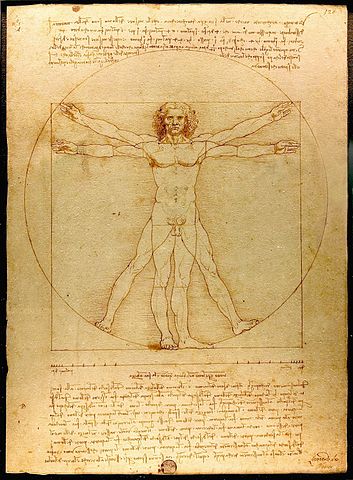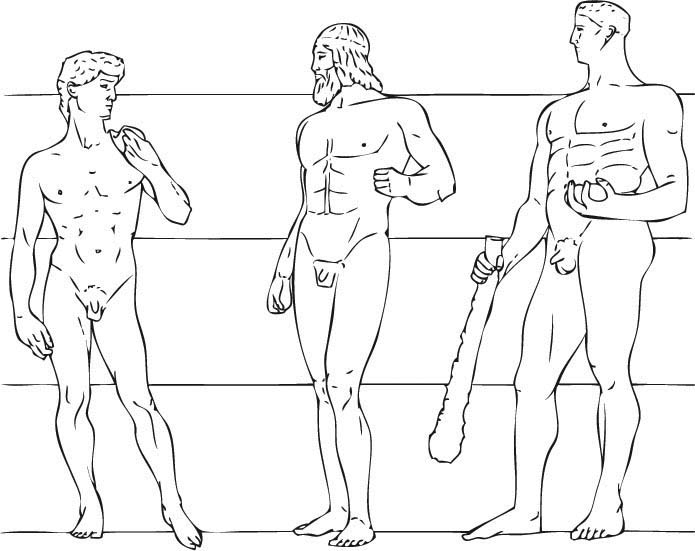
How did classical sculptors convey the stature of human figures, such as the diminutive height of David, or the tallness of Hercules? According to idealised human proportions handed down from antiquity, as illustrated in Leonardo’s Vitruvian Man, the human head should be one-eighth as tall as the whole body.
However, measurements from classical statues reveal that sculptors sometimes deviated from this ideal proportion so that figures of small stature were given a head-to-body ratio (HBR) larger than 1/8 (0.125), and figures of large stature given a HBR smaller than 1/8. For example, statues of David by Michelangelo, Donatello and Verrochio have a HBR of over 0.14, whereas statues of Hercules have a HBR of 0.11 or less.


In a study published in 2010 I analysed anthropometric data obtained from 4789 German and NATO military personnel, and found that these artistic deviations have a basis in real human proportions; the size of the head relative to the body (HBR) varies inversely with stature – tall people really do have relatively small heads, and short people have relatively large heads. This pattern can be seen in modern international leaders. Barack Obama is 1.86m tall (6’1”) and has a HBR of 0.126, while Dmitry Medvedev is 1.63m tall (5’4”) and has a HBR of 0.14. Silvio Berlusconi stands at 1.65m (5’5”) with a HBR of 0.145.
Michelangelo’s statue of David in the Accademia, Florence, is actually 4.09m tall, while the statue of Hercules in the Capitoline Museum, Rome stands at only 2.41m. So their actual heights are at odds with their stature as indicated by HBR. The drawing below depicts the two statues alongside one of the ancient Greek Riace Warriors (HBR 0.125), drawn to the scale indicated by their HBR. David would stand at 1.65m (5’5”), Hercules would stand at 1.86m (6’1”), with the Riace Warrior in-between.

The 2010 study also reports a perceptual experiment on stature judgements as a function of HBR. One of the experimental manipulations involved altering the HBR of depicted figures (either real people or statues such as those above) to test whether the change in HBR altered perceived stature. Results showed that perceived stature is influenced by HBR, indicating that classical sculptors were successful in their attempts to convey stature with HBR. More generally, an ability to judge stature has clear adaptive value because it offers information about the threat posed by a rival seen at a distance, and the protection and evolutionary ‘fitness’ offered by a potential mate. So as well as offering a new perspective on classical sculpture, the paper highlights the importance of HBR as a biologically significant visual cue about the size of fellow humans. Take home message - If you want to make yourself look tall, use a hairstyle and accessories to make your head look small, and vice-versa.



